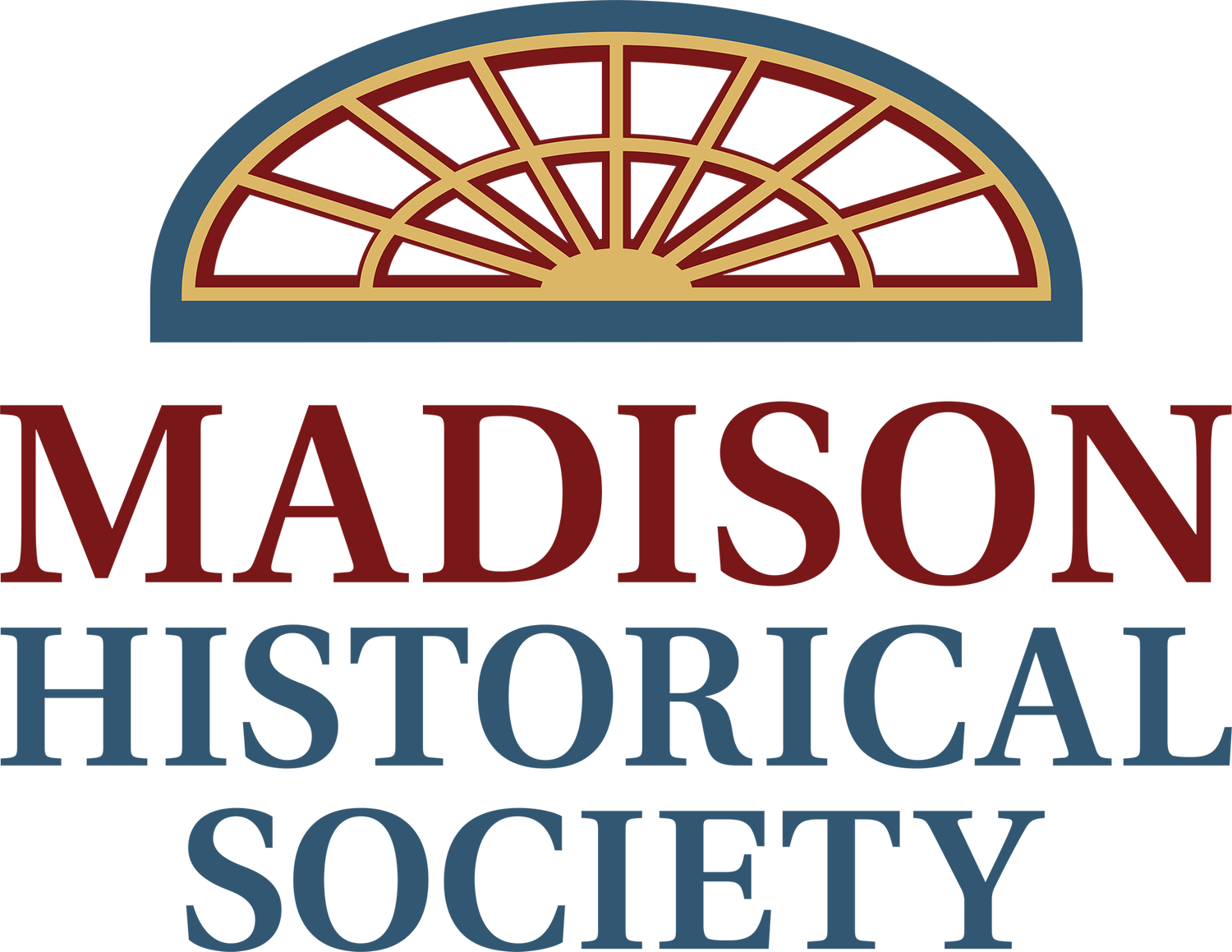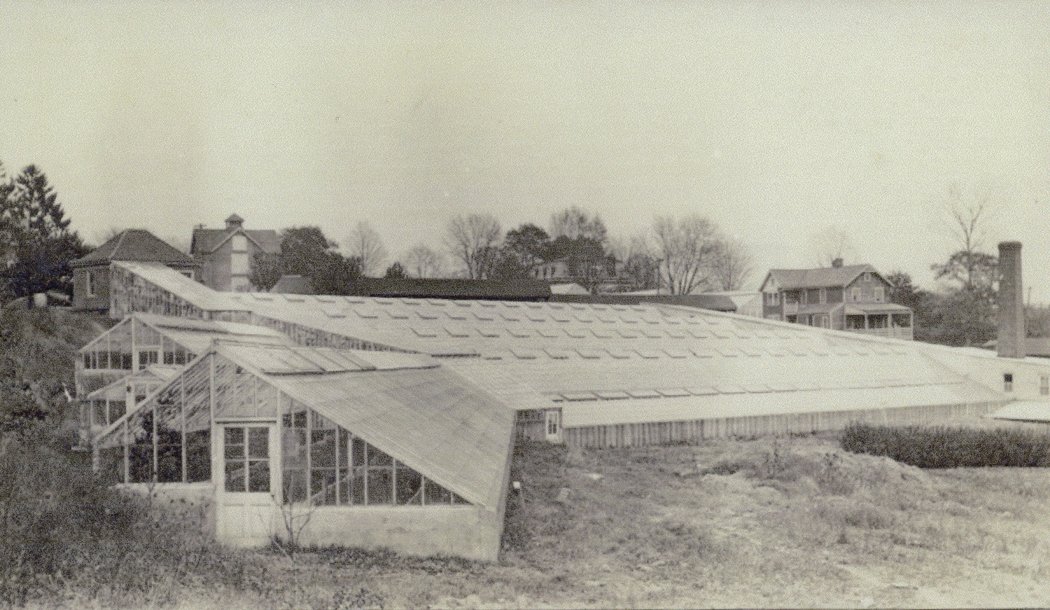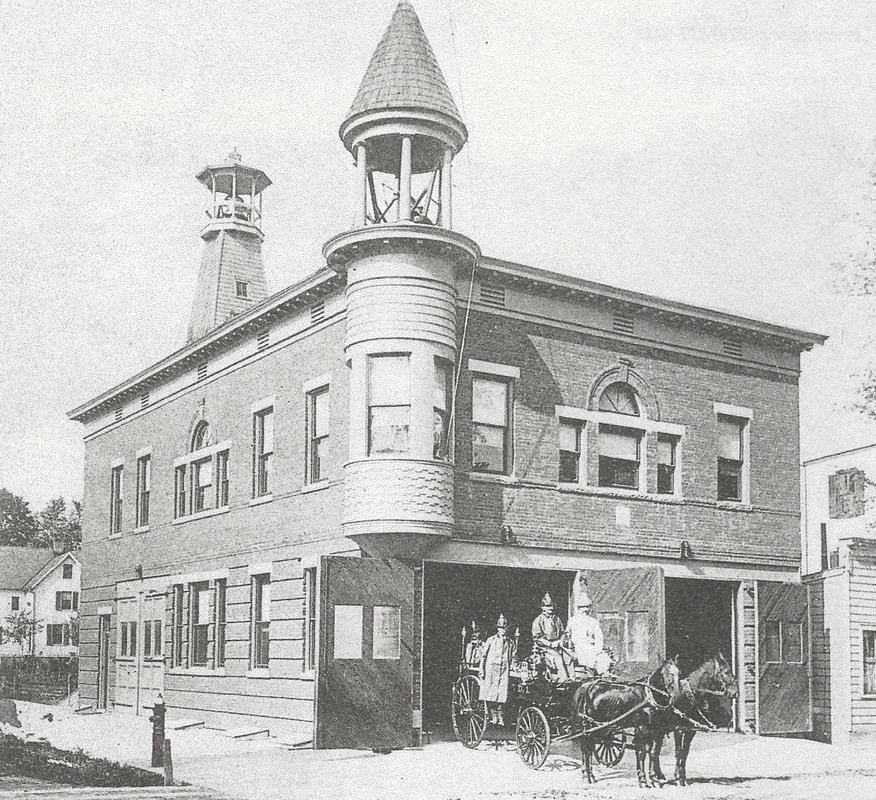
The Lasley Family visit to Madison on Waverly Place
1834 to 1889 Village of Madison, Chatham Township
1834
At the instigation of public spirited and temperance minded citizens, the community changed its name from Bottle Hill to Madison, after President James Madison.
1837
The Morris and Essex Railroad came to Madison from Newark. At first, two horses pulled a small car over the single track line which crawled over the “Summit of the Short Hills.” Shortly after completion, a tiny steam locomotive provided the power for one passenger car and one freight car twice a day.
1839
Catholic church on Ridgedale Ave.
Saint Vincent Martyr Catholic Church was dedicated. Most of the money to build the church came from the two Boisaubin brothers, Amedee Boisaubin and V.S.K. Beaupland (having taken his mother’s maiden name). It was named after Boisaubin’s patron Saint, Saint Vincent Martyr. The building at 69 Ridgedale Avenue is now a family residence. The current church was built on Green Village Road in 1905.
1843
The Madison United Methodist Church was officially organized, although Methodism had been practiced in Madison since 1803. The congregation had worshiped in homes, then in the East Madison School and in Keep’s Hat and Umbrella factory. The first church edifice is still standing on Waverly Place.
1848
In the basement of the Saint Vincent Martyr Catholic Church at 69 Ridgedale Avenue, the first Catholic elementary school was started with an enrollment of 24 students. The school was moved in 1866 to a new structure on Park Avenue.
1851
Borough Hall 1850
The Presbyterian Session House and Sunday School was built near the intersection of Park Ave. and Main St. It was also known as the Lecture Room and used for a variety of community functions, lectures, and all mid-week prayer meetings. After 1888, when Webb Chapel was built, it was used for town offices until James Park was created on the site.
1853
The first building for a Black church was erected in the present Fairwoods section of Madison and was known as the African Union Church of Madison. Blacks were living in Bottle Hill in the early 1800s. Many had been indentured servants or slaves. After the Civil War most worked in various capacities on the estates of the wealthy residents.
1854
The first Episcopal services were held in the home of Col. Stephen D. Hunting. A year later, the cornerstone for Grace Episcopal Church, a gothic revival style structure, was laid. The church was consecrated in 1857. The building has four Tiffany windows, two of them are signed. One of the signed windows has Louis Comfort Tiffany’s signature and is dated 1897. The other window is signed Tiffany Studios 1913.
1856
The first greenhouse began operating when Alfred M. Treadwell built several greenhouses on his estate. For over a century Madison was known as the “Rose City.” The growing of roses for the New York market was once a vital industry here, but the premium on land for housing, the cost of heating greenhouses, and competition from Florida caused a decline in the industry. A memorial plaque to the last commercial greenhouse in Madison, razed in 1985 to make way for a residential development, can be seen on Garfield Avenue.
1862
James Augustus Webb came to Madison. He helped organize the YMCA and later to fund the building of the facility on Main Street. He actually gave one-fifth of the total cost of the building. He and his wife Margarita built the Gothic Webb Memorial Chapel on Green Avenue as a memorial for their son who died in 1887. They gave it to the Presbyterian Church. In 1903, Webb provided the land and donated a new club house for the Madison Golf Club.
1863
The African Union Church of Madison was moved from the “Fairwoods” area to Kings Road. Judge Frank Lathrop bought the new property on Kings Road at Cross Street and paid to have the building moved. In the 1870s this group, with other worshippers, came under the supervision of the African Methodist Episcopal Church. In 1885, the present Bethel A.M.E. Church was built on Central Avenue and Chapel Street on land given to them by Mr. and Mrs. William Jackson Brittin. Several members of the congregation including Mr. and Mrs. S. Cornelius Molburn True, Dennis and Mary Hoggans, and William Henry Williams, mortgaged their homes to build the church.
1865
The Kluxen family from Germany set up a winery on Fairview Avenue in the rear of a large home. The Kluxen winery initially produced sacramental wine, but in the 20th century expanded into many varieties including champagne. The house still stands today.
Gibbons Mansion sold to Daniel Drew for Methodist Theological Seminary 1867
1867
Drew University was founded, as Drew Theological Seminary, by the Methodist Episcopal Church with the help of Daniel Drew, who donated part of the former William Gibbons Estate to the Church after buying the property from William Heyward Gibbons. The Gibbons mansion was renamed Mead Hall after Drew’s wife, Roxanna Mead. Daniel Drew also endowed the Institution with $250,000. The present Madison United Methodist Church and parsonage were erected adjacent to the campus at the same time on additional property Daniel Drew gave for the church.
1873
Judge F.S. Lathrop, an active citizen of the community, generous in his support of the local Episcopal Church and the African Union Church and donor of the present Waverly Place to the Borough, developed as his residence the area of Madison that is known today as Giralda Farms corporate office park at Madison Avenue and Loantaka Way.
The Madison YMCA was organized at the instigation of community leaders. The first building housing the YMCA was built in 1907 on Main Street. It moved to its present site in 1963.
1877
In April, the Madison Eye Opener began publishing monthly for three issues. When the owner, Fred B. Bardon took a partner, the name was changed to the Madison Journal and it was published weekly. In 1882, it became the Madison Weekly Eagle.
A disastrous fire on October 21st, wiped out five buildings, including the railroad depot and Oriental Hall, on the west side of Depot Place (now known as Waverly Place). The fire started in the I.J. Ayres Grocery Store on the first floor of a building that would be at 11-13 Waverly Place today. The fire consumed the entire building, which housed on the upper two floors the YMCA. The other buildings burned were Mrs. Dunn’s home, the adjoining house owned by George P. Cook and occupied by George W. Squire as a dwelling and confectionery store, and a three-story building owned by J.N. Allen, in which much of the stock of clothiers Allen & Crane was saved. Solomon Sam’s Cigar Store was also engulfed in flames. At that time the town depended on the services of the Morristown fire company.
1879
The Green Avenue School was built near Kings Road on Green Avenue. An addition was put on in 1897 and remained in use until the 1950s. It is now the site of a parking lot and the Presbyterian Church.
1881
2nd Fire Department on Cook and Central Avenue
The fire disaster of 1877, led to the establishment of a volunteer fire department for Madison in May of 1881. William J. Brittin donated a lot at the corner of Elmer Street and Central Avenue where a truck house was built in 1882. (The building is still in use today.) The fire department bought one fire wagon with equipment that included buckets, since the town had no water mains. When there was a fire the firemen borrowed the horses used by Michael Frenz and later Edward F. Frenz, the road overseers. The overseers sprinkled the streets with water to keep the dust down. The horses could be unhitched from the sprinkler wagon and hitched to the fire wagon in as little time as 57 seconds. The firemen of 1881 drew no wages, paid dues of three dollars a year, and were fined each time they missed an alarm.
1883
Madison had telephone service. The small switchboard was located in the Harman Drugstore on Waverly Place. The monthly charge was $4.16 for telephone communication with Morristown and $5.00 for New York and Newark.
1889
The Borough of Madison was incorporated with James P. Albright as the first Mayor, serving in that capacity for fifteen years. The population desired independence from Chatham Township so they could have a municipal water supply and an electric utility. The water plant was built in 1891 on Station Road. Within five years the water and light utilities were self supporting.






